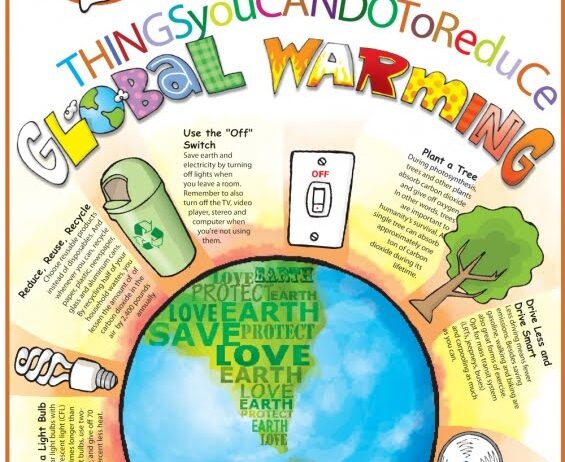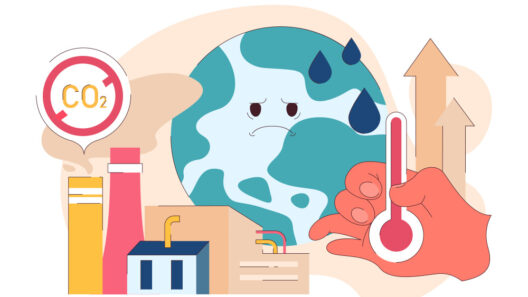Global warming is an intensifying crisis, and the responsibility to combat it permeates every aspect of our lives, including the sanctuary of our homes. Everyday actions may seem inconsequential on an individual scale, but collectively, they can yield substantial results. This discourse will illuminate how we can effectively combat global warming at home by altering consumption patterns, adopting sustainable practices, and fostering a mindset conducive to environmentalism.
1. Energy Efficiency: A Pivotal Initiative
The consumption of energy in our homes constitutes a significant portion of greenhouse gas emissions. Hence, enhancing energy efficiency is paramount. Start by evaluating your lighting choices. Transitioning from incandescent bulbs to LED lighting can reduce energy consumption substantially—with LEDs using at least 75% less energy and lasting significantly longer. Furthermore, consider investing in energy-efficient appliances that meet the Energy Star certification. These appliances are designed to use less electricity and water while maintaining optimal performance.
In addition to appliances, assessing your home’s insulation can lead to remarkable improvements. Seal drafts around windows and doors to mitigate temperature fluctuations, thus reducing reliance on heating and cooling systems. Installing programmable thermostats can optimize energy use by adjusting heating and cooling according to your schedule, further curtailing energy waste.
2. Water Conservation: An Overlooked Essential
Water conservation is as critical as energy efficiency, not merely for resource maintenance but also for reducing energy consumption associated with water heating and distribution. Simple modifications can lead to significant water savings: adopt low-flow showerheads and faucets, and consider dual-flush toilets to minimize water usage per flush.
Moreover, practice mindful water use in daily routines. For instance, turning off the tap while brushing your teeth and limiting shower time can cumulatively conserve tens of thousands of gallons annually. Be vigilant about leaky faucets and plumbing; even minor drips can amount to significant water waste over time.
3. Sustainable Transportation: Rethinking Mobility
Transportation contributes a substantial share of carbon emissions, yet individuals can mitigate their impact through conscientious choices. When feasible, opt for public transportation, carpooling, or bicycling—each of these alternatives drastically reduces carbon footprints. For short distances, walking is not only environmentally friendly but also promotes physical health.
Consider assessing your vehicle’s fuel efficiency if you must drive. Maintaining your vehicle properly, including timely oil changes and tire rotations, can enhance fuel efficiency significantly. For those in the market for a new vehicle, electric or hybrid cars boast decreased emissions and lower operating costs, making them an increasingly viable option.
4. Waste Reduction: The Power of Minimalism
Our consumption patterns hugely influence our carbon footprint. Embrace a minimalist lifestyle by consciously reducing waste. Engage in practices like composting organic waste to divert it from landfills and enrich your garden soil simultaneously. A compost heap or bin transforms scraps into a resource instead of a liability.
Additionally, assess your purchasing habits. Prioritize buying products with minimal packaging or those made from recycled materials. The transition to reusable items—such as shopping bags, water bottles, and food containers—can dramatically decrease single-use plastic waste. Conscientiously sourcing your food—selecting local, organic produce—further reduces environmental impact while supporting local economies.
5. Embracing Renewable Energy
Transitioning to renewable energy sources can appear daunting, but small steps can initiate significant shifts. If feasible, consider installing solar panels. This investment not only diminishes reliance on fossil fuels but also significantly reduces electricity bills over time. Moreover, engaging your utility company about green energy options can reveal opportunities to opt into programs that support renewable energy sources.
While financial constraints may limit immediate interventions, advocating for policies that support renewable energy expansion can foster systemic change. Engage with community leaders and participate in local initiatives to promote sustainability in the region.
6. Promoting Sustainable Practices: A Holistic Approach
While personal actions are essential, instigating wider cultural shifts is equally imperative. Start by educating your family and friends about the importance of home-based environmental practices. Set coherent household policies regarding energy use, waste sorting, and sustainable purchasing to embody these principles effectively within your family. This collective action can ripple outwards, cultivating a community embedded with sustainability values.
Moreover, advocate for initiatives at schools and places of work that encourage sustainability. Organize workshops on sustainable practices, advocate for recycling programs, and engage in tree-planting events. Building a solid foundation for environmental consciousness within your community can foster a culture of responsibility and proactive action.
7. Reevaluation and Reflection: Continuous Improvement
Lastly, continually assess and reflect on your family’s environmental footprint. Engage in an annual review of your sustainable practices. It is crucial to identify areas for improvement, reassess energy and water consumption, and modify behaviors accordingly. Create a family goal based on your assessment to enhance incentives toward sustainability.
In conclusion, the endeavor to halt global warming begins at home, and while individual actions may seem trivial, their cumulative effect can manifest as a powerful force for environmental stewardship. By enhancing energy efficiency, conserving water, embracing sustainable transportation, reducing waste, adopting renewable energy, promoting sustainable practices, and engaging in continual self-reflection, we can foster a home environment that reflects our commitment to combating climate change. Each small step accumulates, cultivating not only individual responsibility but also paving the way for a collective movement toward a sustainable future.








